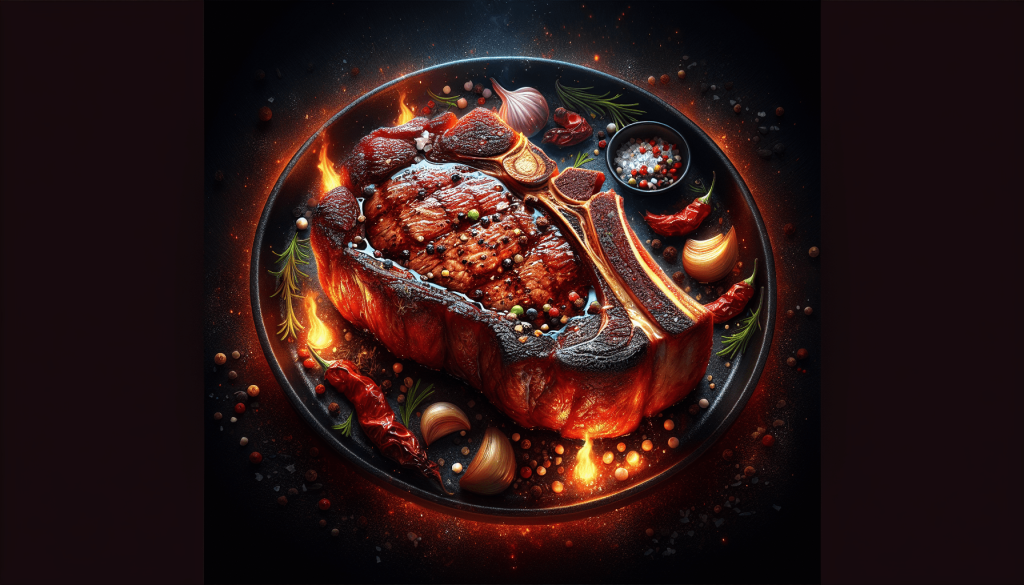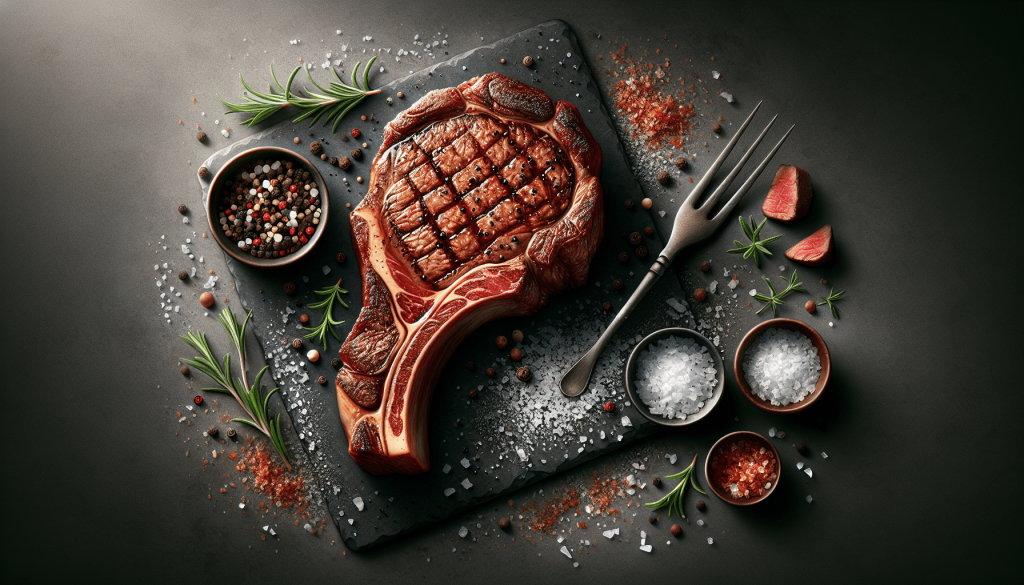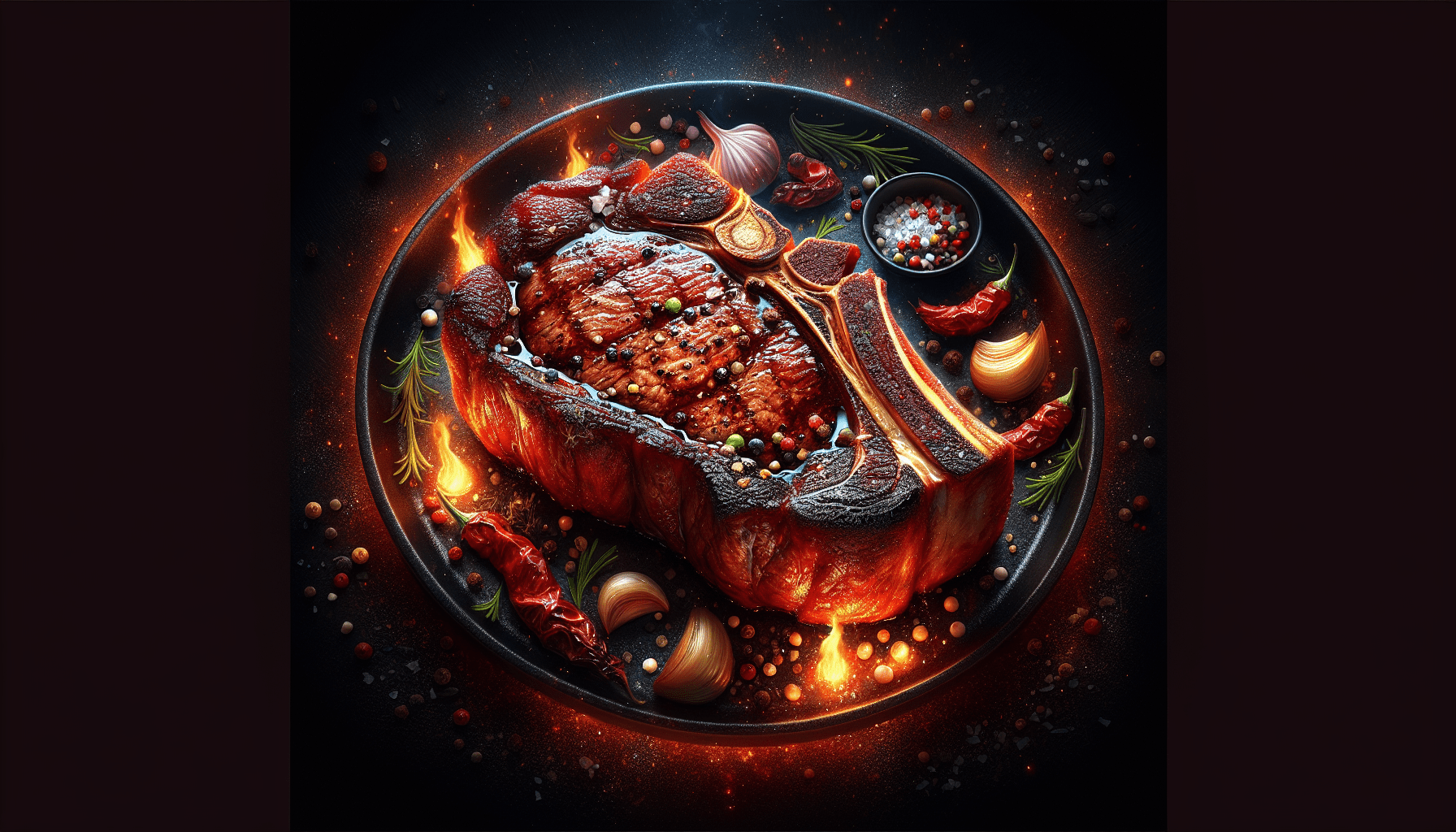Imagine sinking your teeth into a juicy, perfectly cooked ribeye steak that fits perfectly into your carnivore diet. Well, you’re in luck! In this ultimate guide, I’ll be sharing all the tips and tricks to help you cook the most delicious ribeye steak while staying true to your carnivorous lifestyle. From selecting the right cut of meat to mastering cooking techniques, get ready to elevate your steak game to a whole new level. So grab your apron and let’s get grilling!
Choosing the Perfect Ribeye Steak
When it comes to cooking the perfect ribeye steak, the first step is selecting the right cut. Ribeye steaks are known for their incredible marbling, which makes them tender and packed with flavor. Look for a ribeye steak with generous marbling throughout the meat, as this will ensure a juicy and delicious final result. Whether you’re shopping at a butcher’s or a grocery store, take your time to find a well-marbled ribeye steak that meets your preferences.
Grass-Fed vs. Grain-Fed
One decision you’ll need to make when choosing a ribeye steak is whether to go for grass-fed or grain-fed beef. Grass-fed beef comes from cows that have been raised on a natural diet of grass, which typically results in a leaner and more flavorful steak. On the other hand, grain-fed beef comes from cows that have been fed a diet of grains, which can lead to more marbling and a richer taste. Both options have their own merits, so it ultimately comes down to personal preference. Consider trying both varieties to see which one you prefer.

Choosing the Thickness
The thickness of your ribeye steak can greatly impact the cooking process and the final result. Thicker steaks tend to take longer to cook and may require different cooking techniques compared to thinner ones. A general rule of thumb is to aim for a steak that is around 1 to 1.5 inches thick. This thickness allows for a good sear on the outside while ensuring the inside cooks to your desired level of doneness. However, if you prefer a thicker or thinner steak, adjust the cooking time accordingly.
Preparation and Seasoning
Before you start cooking your ribeye steak, there are a few key steps you should take to ensure the best results. Firstly, it’s important to bring the steak to room temperature before grilling. This allows for more even cooking and helps to prevent the steak from becoming overcooked on the outside while still raw in the center.
While not essential, dry aging your ribeye steak can enhance its flavor and tenderness. Dry aging involves storing the steak in a cool and controlled environment for a period of time, typically several weeks. This process allows the meat’s natural enzymes to break down, resulting in a more intense flavor and a tender texture. If you have the time and patience, consider trying this optional step to take your ribeye steak to the next level.
When it comes to seasoning your ribeye steak, simplicity is key. Let the quality of the meat shine by using minimal seasonings. A classic option is to generously sprinkle both sides of the steak with kosher salt and freshly ground black pepper. This simple combination enhances the natural flavors of the beef without overpowering them. However, feel free to experiment with other seasonings such as garlic powder, paprika, or even a dry rub to add extra depth of flavor.

Grilling the Ribeye Steak
Grilling a ribeye steak is the most popular and preferred method of cooking. It allows for the delicious flavors to develop and creates a beautiful sear on the outside of the steak. To ensure a successful grilling experience, proper setup and preparation are essential.
Start by setting up your grill for direct heat. If you’re using a gas grill, preheat it to medium-high heat. For charcoal grills, spread the lit coals evenly across the grill surface. This direct heat will create those coveted sear marks on the steak and give it a beautiful char.
Once the grill is set up, it’s time to preheat it. This step ensures that the grill grates are hot enough to sear the steak and prevent it from sticking. Preheat the grill for about 10-15 minutes, or until the temperature reaches around 450-500°F.
When it comes to grilling the ribeye steak, you have two main options: direct heat or indirect heat. Direct heat involves placing the steak directly above the heat source, while indirect heat involves placing the steak next to the heat source but not directly over it. Direct heat is best for achieving a quick sear, while indirect heat is more suitable for thicker steaks that require longer cooking times. Choose the method that works best for the thickness of your steak and your desired level of doneness.
For those looking to infuse their ribeye steak with a smoky flavor, consider adding wood chips to the grill. Soak the wood chips in water for about 30 minutes, then drain them. Place the wood chips directly on the hot coals or in a smoker box for gas grills. The smoke from the wood chips will add a delicious aroma to your steak, giving it an extra dimension of flavor.
Achieving the Perfect Cook
Determining the desired doneness of your ribeye steak is crucial for achieving the perfect cook. Whether you prefer a rare, medium-rare, medium, or well-done steak, there are a few different techniques you can employ to reach your desired level of doneness.
One popular method is the reverse sear technique. This involves cooking the steak at a lower temperature first to evenly cook the inside, and then finishing it off with a high-heat sear to develop a flavorful crust. To reverse sear, start by setting up your grill for indirect heat. Place the steak on the cool side of the grill and cook it slowly until it reaches an internal temperature slightly below your desired doneness. Then, transfer the steak to the hot side of the grill and sear it for a couple of minutes on each side until you achieve your desired crust.
Another technique that has gained popularity in recent years is sous vide cooking. Sous vide involves vacuum-sealing the steak and cooking it in a temperature-controlled water bath for an extended period of time. This method ensures precise and consistent results, as the steak cooks evenly from edge to edge. After the sous vide process, finish the steak on the grill or in a hot skillet to develop a caramelized crust.
Resting and Slicing the Ribeye Steak
Resting the ribeye steak after cooking is a crucial step that should never be skipped. Allowing the steak to rest for a few minutes before slicing allows the juices to redistribute, resulting in a juicy and tender final product. Simply place the cooked steak on a cutting board and loosely tent it with aluminum foil. Let it rest for about 5-10 minutes, depending on the thickness of the steak.
When it comes time to slice and serve the ribeye steak, it’s important to cut against the grain. Cutting against the grain means slicing the steak perpendicular to the direction of the muscle fibers. This technique helps to further tenderize the meat and ensure a more enjoyable eating experience. Take your time and use a sharp knife to slice the steak into thin or thick slices, depending on your preference.
Sides and Sauces
No ribeye steak dinner is complete without some delicious sides and sauces to accompany it. While the star of the show is undoubtedly the steak, carefully chosen sides and sauces can elevate the meal to new heights.
Classic side dishes like mashed potatoes, grilled asparagus, or creamed spinach are excellent choices that complement the rich flavors of the ribeye steak. These traditional side dishes provide a balanced and satisfying meal that will leave you feeling fully satisfied.
When it comes to sauces, simplicity is often the best approach. A classic béarnaise sauce, which combines egg yolks, butter, and herbs, is a popular choice that pairs beautifully with a juicy ribeye steak. Alternatively, a homemade chimichurri sauce, made with fresh herbs, garlic, olive oil, and vinegar, adds a vibrant and tangy element to the dish. Choose a sauce that enhances the flavors of the steak without overpowering them.
To complete the dining experience, don’t forget to pair your ribeye steak with the perfect wine. A full-bodied red wine, such as a cabernet sauvignon or a malbec, pairs exceptionally well with the rich and robust flavors of the steak. The tannins in these wines help to cleanse the palate, enhancing the overall enjoyment of the meal.
Tips and Tricks
Cooking the perfect ribeye steak requires a combination of technique and attention to detail. Here are some tips and tricks to help you along the way:
- Use a meat thermometer to ensure accurate cooking times and doneness levels.
- Avoid common mistakes such as overcrowding the grill or flipping the steak too frequently.
- Let the high-quality ribeye steak be the star of the show by keeping the seasonings simple and allowing the natural flavors to shine.
By following these tips, you’ll be well on your way to grilling the perfect ribeye steak every time.
Variations and Experimentation
Once you’ve mastered the art of cooking the perfect ribeye steak, don’t be afraid to get creative and experiment with different flavors and techniques. Try using dry rubs and marinades to add a burst of flavor to your steak. Whether it’s a spicy Cajun rub or a tangy Asian marinade, the options are endless.
For those looking to add an extra layer of smokiness to their steak, consider experimenting with different types of wood chips. Hickory, mesquite, and cherry wood chips can each impart a unique and delicious flavor to the meat.
Additionally, you can explore different cooking techniques such as pan-searing, broiling, or even using a cast-iron skillet to cook your ribeye steak. Each method offers its own advantages and can result in slightly different textures and flavors.
Safety and Hygiene Considerations
When handling raw meat, it’s vital to follow proper safety and hygiene practices to prevent foodborne illnesses. Always wash your hands thoroughly before and after handling raw meat to avoid cross-contamination. Use separate cutting boards and utensils for raw and cooked meat to ensure bacteria from the raw steak does not contaminate other foods.
Regularly clean your grill to ensure its optimal performance and prevent any buildup that could affect the taste of your ribeye steak. Use a grill brush to scrub the grates before and after each use, and occasionally deep clean the grill by removing the grates and cleaning them thoroughly.
Leftover Ribeye Steak Ideas
If you find yourself with leftover ribeye steak, don’t let it go to waste. There are plenty of delicious ways to transform those leftovers into new and exciting dishes.
One option is to create mouthwatering sandwiches or wraps. Thinly slice the leftover steak and layer it on your favorite bread or wrap, along with some fresh vegetables and a tasty spread like horseradish mayo or garlic aioli. This quick and easy meal is perfect for a packed lunch or a light dinner.
Another option is to incorporate the ribeye steak into stir-fries or salads. Sauté the sliced steak with your choice of vegetables and seasonings, then toss it with noodles or rice for a flavorful stir-fry. Alternatively, slice the steak and use it as a salad topping, adding some crunch with nuts or seeds and a tangy dressing.
For a creative twist on breakfast, use your leftover ribeye steak to make delicious steak and egg breakfast tacos or steak hash. The rich and savory flavors of the steak are the perfect accompaniment to eggs and other breakfast ingredients.
With a little imagination, you can turn your leftover ribeye steak into a variety of exciting and delicious dishes that will keep you satisfied throughout the day.
In conclusion, cooking the perfect ribeye steak on the carnivore diet is a truly rewarding experience. From selecting the right cut to mastering the cooking technique, each step plays a vital role in achieving a tender, juicy, and flavorful steak. By following the comprehensive guide outlined above, you’ll be well-equipped to impress your friends and family with your culinary prowess and enjoy a succulent ribeye steak that is sure to become a favorite on your carnivore diet journey.
